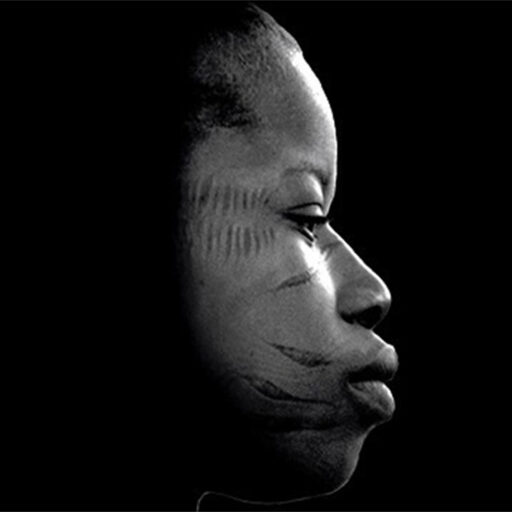One Friday night last month, the electricity was off in the streets of Palmeirinha, a favela in Rio de Janeiro. Three black teenagers were joking around in front of their houses. One of them started to run and the others followed, laughing. At that moment, the police came out shooting. Chauan Jambre Cezário, 19 years old, was seriously wounded. Alan de Souza Lima, 15 years old, died on the site with a cellphone in his hands — he had caught everything on video, including his own last agonizing minutes.
por Vanessa Barbara no New York Times
According to an official report released the next day, the boys were shot after a confrontation with the police. Officers allegedly found two guns at the scene and charged Mr. Cezário with resisting arrest. The boy, who sells iced tea on Ipanema Beach, was carried to the emergency room and handcuffed to the hospital bed
Days later, the nine-minute cellphone video went public. Images clearly show that the teenagers didn’t have any guns on them and that there was neither confrontation nor resistance. Seconds after the shooting, a policeman asked why they had been running, to which a bleeding Mr. Cezário answered: “We were just playing around, sir.”
The charges have been dropped, but his experience, and the death of his younger friend, reflect a history of violence against young black men in Brazil.
Afro-Brazilians — people who self-identify as black or brown — make up 53 percent of our population, a total of about 106 million individuals. It is the world’s largest black population outside Africa and the second largest after Nigeria. According to the United Nations Children’s Fund, black Brazilians ages 12 to 18 are almost three times more likely to get killed than their white counterparts, and a survey by the Brazilian Forum on Public Security found that black Brazilians accounted for 68 percent of all homicide victims.
They are also more likely to be victims of police killings; a study by the University of São Carlos showed that 58 percent of all people killed in the state of São Paulo by the military police were black. They make up 62 percent of all people incarcerated nationwide.
“When you see a police patrol car, your heart freezes,” Luiz Roberto Lima, a black photographer from Rio de Janeiro who lived on the streets as a teenager, told me. “They could kill you because you were at the street or because you were standing up for your rights, and they could also kill you for pleasure. Even if you don’t have a criminal record, they may trump up something against you.” He was referring to the infamous “resistance killings,” when victims are shot after allegedly firing on the police and there is no further investigation — which is what probably would have happened in Palmeirinha if it weren’t for the video evidence.
Racial inequality has obvious historical roots. Slavery in Brazil lasted for approximately three centuries, from the start of the 16th century to the mid-19th, a period during which five million slaves were shipped here from Africa — around 11 times more than to North America. The nation was the last in the Americas to abolish slavery, in 1888. But many Afro-Brazilians are still confined to the margins of society. Today, almost 70 percent of people living in extreme poverty are black. And they are almost totally absent from positions of power. All 39 ministers of President Dilma Rousseff’s cabinet are white, except one: the head of the Special Secretariat for the Promotion of Racial Equality.
In a recent newspaper interview, the Nigerian writer Chimamanda Ngozi Adichie said that “Brazil is in denial about the racial issue.” She was astonished to learn, during a visit a few years ago, that we don’t talk much about the subject here, as if racism were not an issue. She added: “I couldn’t help but notice that race and class are connected in Brazil. I would go to nice restaurants and not see a single black person.”
This observation can be confirmed by what some Brazilians call “the neck test.” Coined by the public servant Francisco Antero and the history teacher Luzia Souza, it consists of counting the number of white and black people in different roles in different circumstances. Crane your neck into a jewelry store, for example, and count how many salesmen are black, compared with how many customers. Or take a peek at a fancy school and count how many students and teachers are black, and how many are janitors.
I’ve recently applied the neck test to an expensive ice cream store in a rich neighborhood of São Paulo. Five of the seven employees were black, compared with one in 30 customers — and I suspect he was a foreigner. Then, on a city bus, out of around two dozen passengers, I noticed that I was one of only three whites.
To improve this situation, the Brazilian government has in recent years introduced a few affirmative action programs, such as setting aside for racial minorities a certain percentage of jobs in the Civil Service and places in public universities. It has also delivered partial land rights to nine communities formed by quilombolas (descendants from groups of runaway slaves). Although these land rights are guaranteed by our Constitution, only an estimated 5.8 percent of the 214,000 families living in quilombo communities have received them.
The oldest university affirmative action program has existed for 10 years, but it still faces strong criticism. One of the biggest Brazilian newspapers has taken a firm editorial stance against racial quotas in universities, holding that a system encouraging socioeconomic diversity would be enough. Critics sometimes regard quotas as reverse discrimination, or worry that they might incite racial hatred in our imagined “racial democracy,” where blacks and whites play side by side in the streets without being shot in the chest.
It’s just as Ms. Adichie said. Brazil is still in denial.
 Vanessa Barbara is a columnist for the Brazilian newspaper O Estado de São Paulo and the editor of the literary website A Hortaliça.
Vanessa Barbara is a columnist for the Brazilian newspaper O Estado de São Paulo and the editor of the literary website A Hortaliça.




